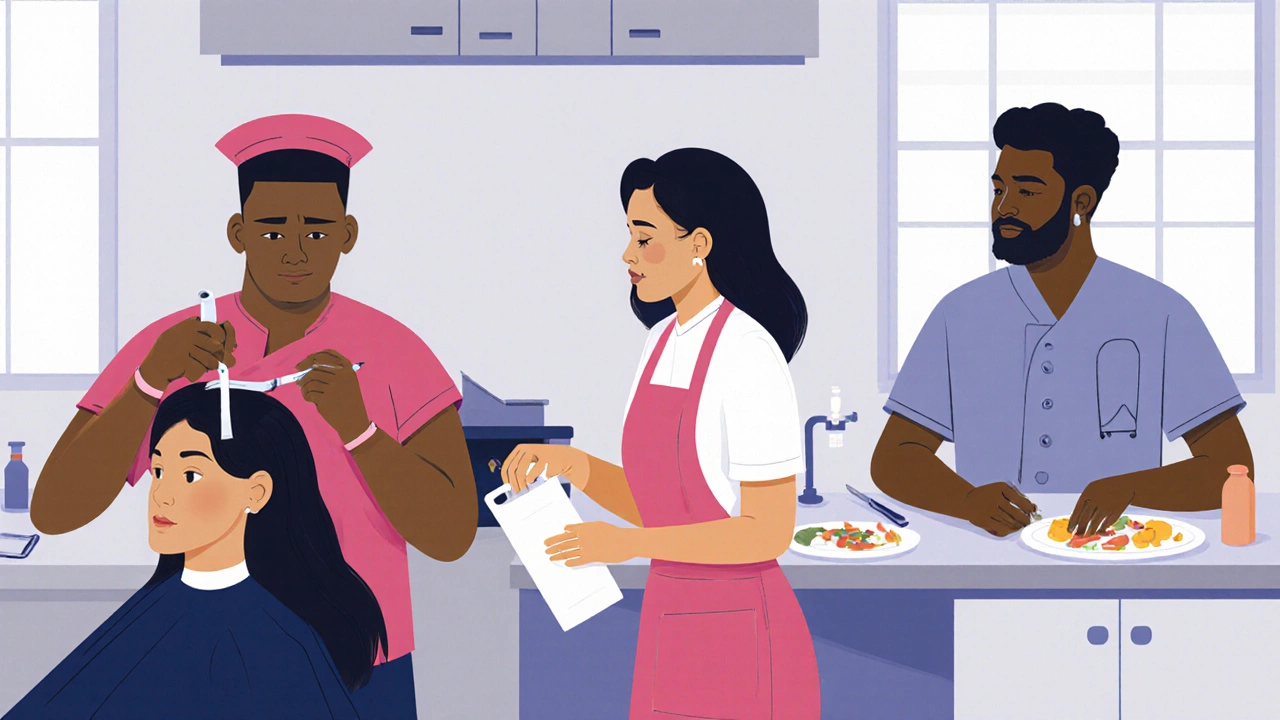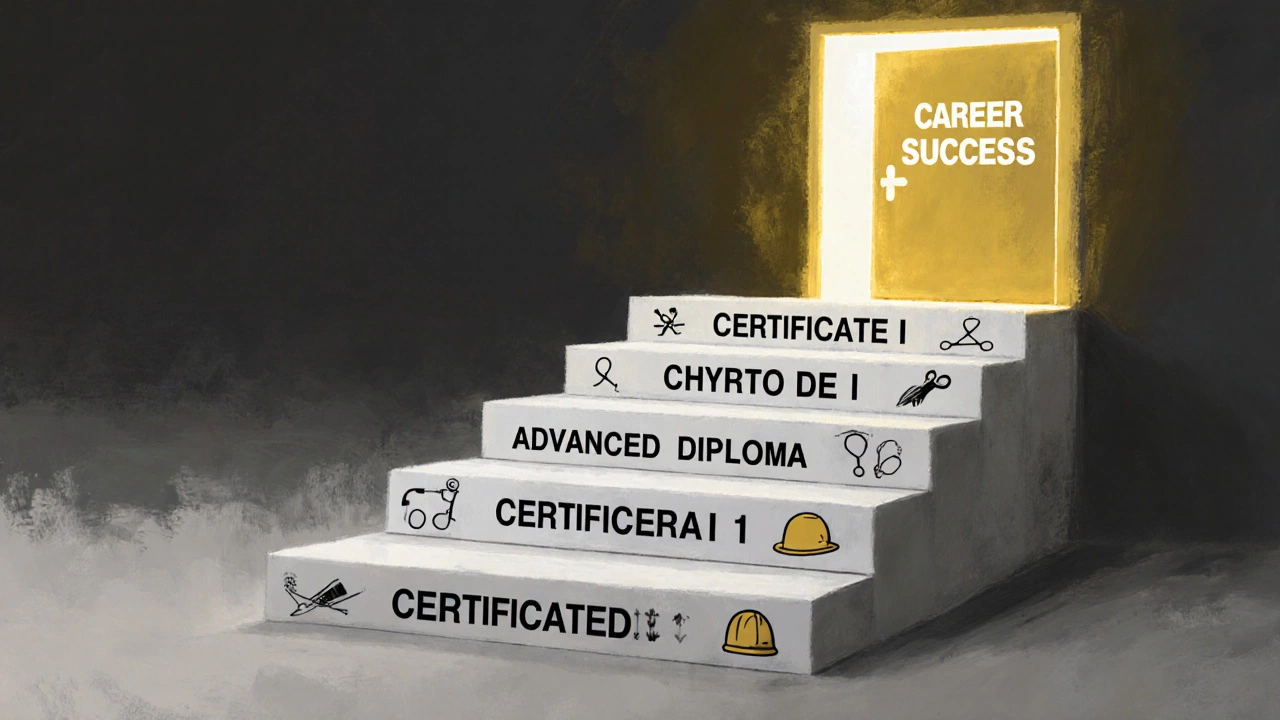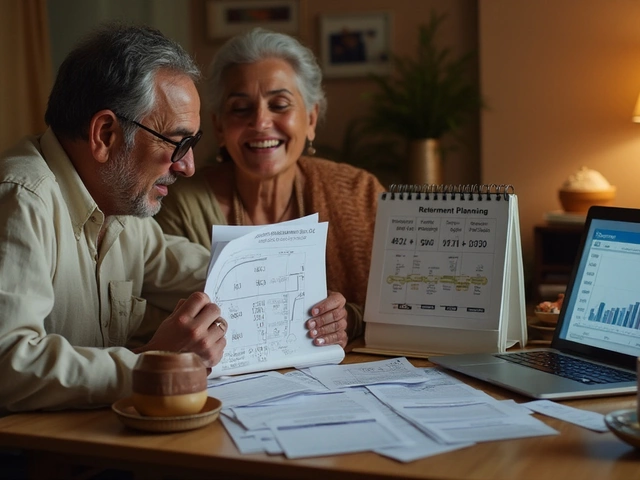Ever wonder why some people land good jobs right after school without a university degree? It’s not luck. It’s vocational qualification. These are hands-on certifications that prove you can actually do a job - not just talk about it. Whether you’re fixing cars, wiring homes, cooking meals in a restaurant, or managing patient care, vocational qualifications turn practice into proof.
What Exactly Is a Vocational Qualification?
A vocational qualification is a formal credential that shows you’ve learned the specific skills needed for a particular job. Unlike academic degrees that focus on theory, these qualifications are built around doing. You don’t just study plumbing - you install pipes, fix leaks, and pass inspections. You don’t just learn about nursing - you take vitals, assist with treatments, and follow safety protocols under supervision.
These credentials are usually issued by government-approved training bodies, industry associations, or registered training organizations. In Australia, they fall under the Australian Qualifications Framework (AQF) and range from Certificate I to Advanced Diploma levels. Each level matches a clear set of job-ready skills. For example, a Certificate III in Electrotechnology Electrician means you’re qualified to work as an electrician under supervision - and can later get your full license.
How Is It Different From a Degree?
Think of it this way: a university degree teaches you how the world works. A vocational qualification teaches you how to fix it.
Degrees often take three to four years. They cover broad subjects like economics, psychology, or history. You might write essays, take exams, and do research. But when you graduate, you still need internships or entry-level roles to learn how to apply that knowledge.
Vocational courses? They’re shorter - usually six months to two years. You spend most of your time in workshops, kitchens, clinics, or job sites. By the end, you’re not just ready to apply for a job. You’re ready to start one. Employers know this. That’s why trades like plumbing, carpentry, and electrical work have low unemployment rates - even when university grads are struggling to find work.
Common Types of Vocational Qualifications
There are hundreds of vocational qualifications worldwide, but here are the most common ones you’ll see in Australia and similar countries:
- Certificate II/III in Automotive Service Technology - for mechanics and service technicians
- Certificate III in Hairdressing - trains you to cut, color, and style hair in salons
- Certificate IV in Dental Assisting - prepares you to support dentists during procedures
- Certificate III in Early Childhood Education and Care - qualifies you to work in childcare centers
- Advanced Diploma in Building and Construction (Management) - for site supervisors and project coordinators
Some qualifications even lead directly to licensing. For example, completing a Certificate III in Plumbing allows you to apply for a tradesperson’s license with your state’s regulatory body. No degree needed. Just proof you can do the job.

Who Benefits Most From Vocational Qualifications?
You don’t need to be a certain age, background, or academic performer to benefit. Here’s who typically thrives:
- High school students who prefer building, fixing, or helping over sitting in lecture halls
- Adults switching careers who want to enter a stable trade without starting from scratch
- People with financial constraints - vocational courses cost far less than university
- Those who learn by doing - if you remember better by touching, moving, or practicing, this is your path
- Immigrants or refugees looking to rebuild their careers using recognized local credentials
In Sydney, for instance, many migrant workers complete vocational training to get their skills officially recognized. A nurse from India might get a Certificate IV in Aged Care and start working in a residential facility within months - while waiting for their full nursing registration. It’s a practical bridge.
How Do You Get a Vocational Qualification?
Getting one is simpler than you think. Here’s the typical process:
- Find your trade or field - What do you enjoy doing? Fixing things? Helping people? Working with your hands?
- Check the local requirements - In Australia, visit training.gov.au to search for accredited qualifications. Look for the code (like UEENEED101A) to make sure it’s official.
- Choose a training provider - TAFEs, private colleges, and some employers offer courses. Compare prices, schedules, and whether they include work placements.
- Enroll and train - Most courses mix classroom learning with real-world practice. You’ll be assessed on actual tasks, not just written tests.
- Get certified - Once you pass, you receive a nationally recognized certificate. Some fields require extra licensing from government agencies.
Many courses offer flexible options: part-time, online theory + in-person practice, or even apprenticeships where you earn while you learn.

Why Employers Value Vocational Qualifications
Employers don’t just hire people with degrees. They hire people who can do the job - and fast.
A construction company doesn’t care if your resume says you studied physics at university. They care if you can read blueprints, use power tools safely, and follow site safety rules. A vocational qualification proves you’ve done exactly that.
Studies from the Australian Government’s Department of Employment show that 82% of vocational graduates find full-time work within four months of finishing. Compare that to the 68% rate for bachelor’s degree holders in some fields.
Why? Because vocational training is designed with industry input. Employers help design the curriculum. Trainers are often ex-practitioners. Assessments are based on real workplace tasks. You’re not learning for a test - you’re learning for the job.
Myths About Vocational Qualifications
There are still old ideas floating around:
- “It’s for people who can’t get into university.” - False. Many high-achieving students choose vocational paths because they suit their goals better. Some even do both - get a Certificate III while in Year 12.
- “You’ll never earn much.” - Not true. Qualified electricians in Australia earn an average of $90,000 a year. Plumbers and diesel mechanics often earn more. Many start their own businesses.
- “It’s a dead-end.” - Wrong. Vocational qualifications can lead to management roles, teaching positions, or even further study. You can move from Certificate III to Advanced Diploma to a bachelor’s degree later, if you want.
The truth? Vocational paths are flexible, respected, and in demand.
Where Do You Go From Here?
If you’re considering a vocational qualification, start by asking yourself:
- What kind of work do I actually want to do every day?
- Do I prefer working outdoors, in a shop, with people, or behind a screen?
- How soon do I want to start earning?
Then, visit training.gov.au and search for a qualification that matches your interest. Talk to local TAFEs or trade schools. Ask about job placement rates. Ask if they offer apprenticeships.
Don’t let outdated ideas hold you back. The future of work isn’t just about degrees. It’s about skills. And vocational qualifications are the fastest, most direct way to build them.
Is a vocational qualification the same as an apprenticeship?
Not exactly. A vocational qualification is the credential you earn after completing training. An apprenticeship is a paid job where you learn on the job while also studying. Many apprenticeships lead to a vocational qualification - but you can also earn one through full-time training without being employed.
Can I get financial help for vocational training?
Yes. In Australia, many states offer fee subsidies or free training for priority occupations like aged care, plumbing, and electrical work. Programs like Skills First in Victoria or Smart and Skilled in NSW can cover most or all of your course fees. Check your state’s training website for eligibility.
Are vocational qualifications recognized overseas?
Some are, especially in countries with similar systems like Canada, New Zealand, and the UK. But recognition varies. If you plan to move, check with the professional body in your target country. Some trades require additional exams or bridging courses.
How long does it take to complete a vocational qualification?
It depends on the level and your pace. Certificate I and II usually take 6-12 months. Certificate III - the most common for trades - takes 12-24 months. Advanced Diplomas can take up to two years. Many programs offer part-time and flexible options.
Can I study vocational courses online?
Partially. Theory components - like safety rules, regulations, or technical knowledge - can often be done online. But the hands-on parts, like welding, nursing, or car repair, require in-person training. Most accredited programs combine online learning with practical workshops or workplace placements.







0 Comments